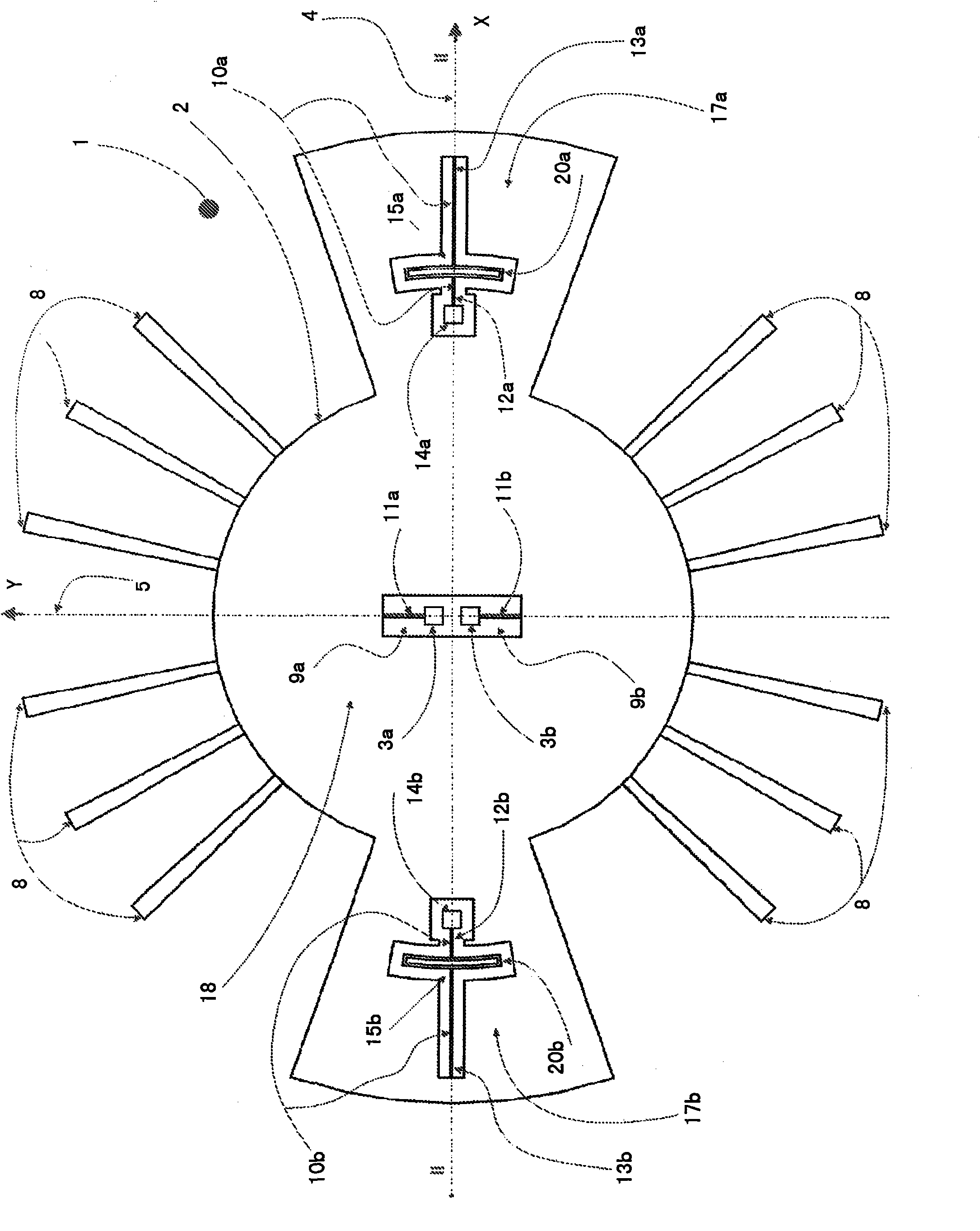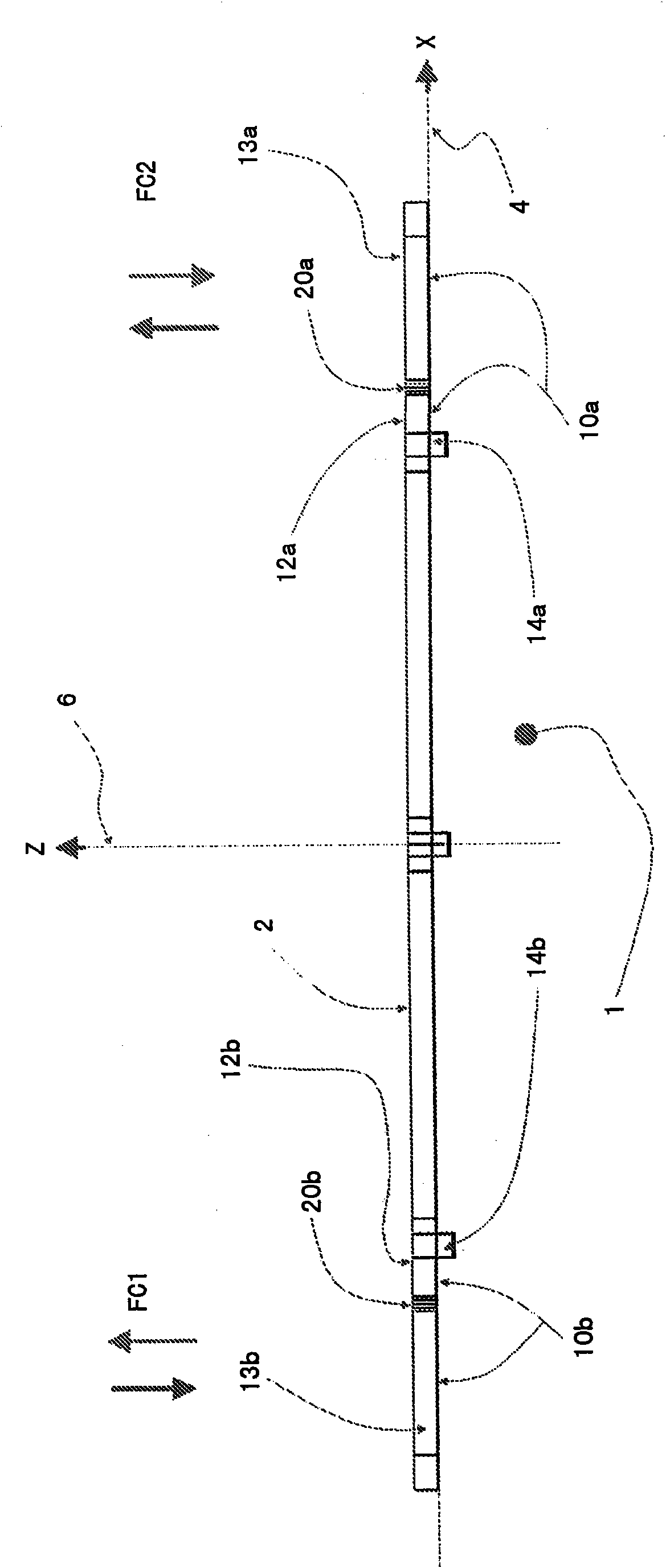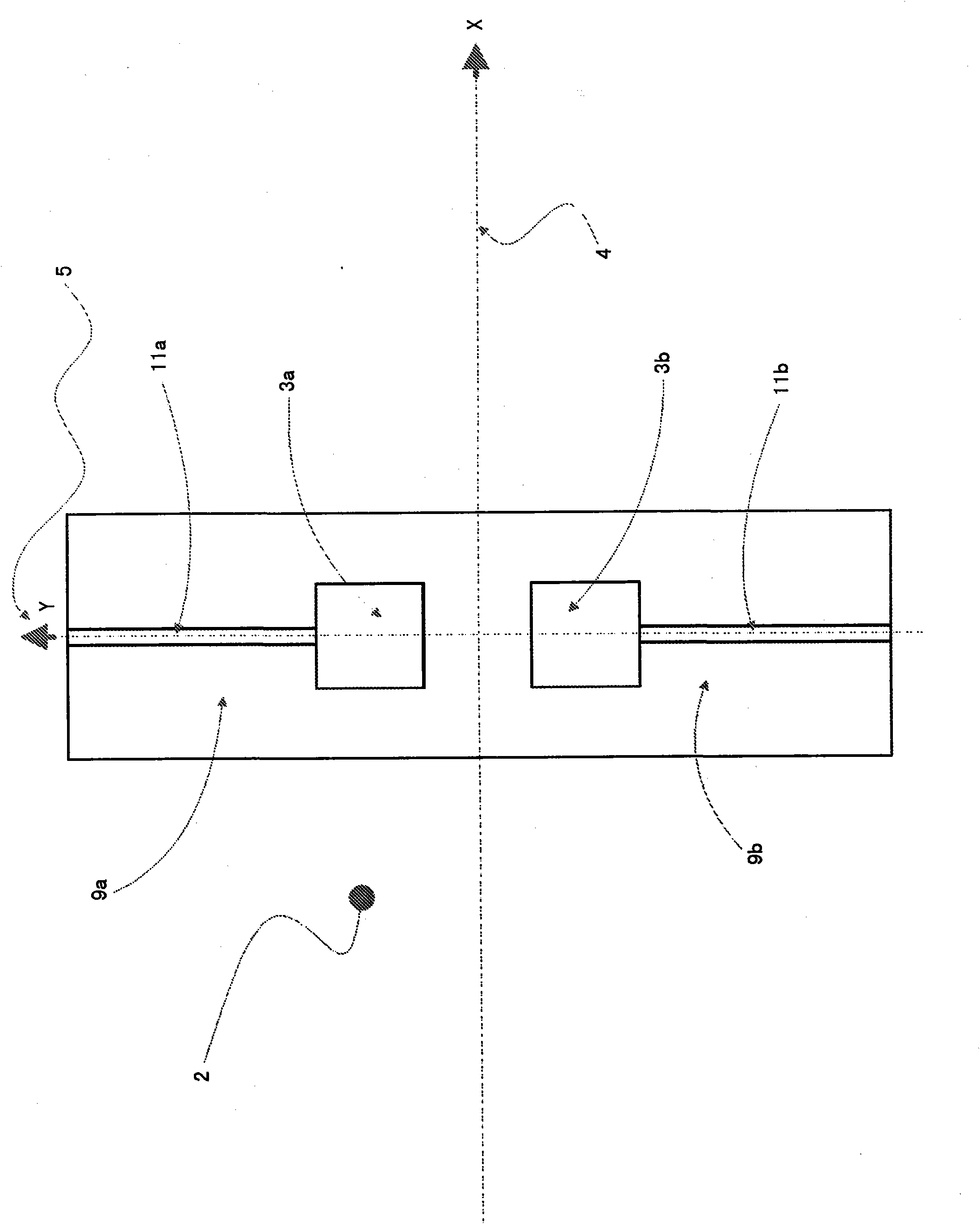Micromechanical rate-of-rotation sensor
一种转动率、微机械的技术,应用在转向感应设备、陀螺仪/转向感应设备、仪器等方向,能够解决不够稳健、冲击加速或振颤的影响易受干扰、粘附传感器不可用等问题,达到且稳健实施形式、紧凑实施形式的效果
- Summary
- Abstract
- Description
- Claims
- Application Information
AI Technical Summary
Problems solved by technology
Method used
Image
Examples
Embodiment Construction
[0033] In the following description of the exemplary embodiment and in the figures, identical elements and functional units of the sensor are provided with the same reference numerals and designations. The Cartesian coordinate system shown in the drawings is the sensor reference system given in the general description of the invention. The Z axis of the Cartesian coordinate system ( figure 2 with Image 6 6) in figure 1 with Figure 5 extends vertically out of the drawing plane toward the viewer. Will figure 1 with figure 2 or Figure 5 with Image 6 Check together to get the exact position of the coordinate origin. In the following, the X-axis 4 is called the measurement axis 4 , the Y-axis 5 is called the detection axis 5 , and the Z-axis 6 is called the drive axis 6 .
[0034] In the first embodiment figure 1 The sensor shown in top view in FIG. 2 has a substrate 1 as a base element, which is sufficiently known from the prior art. A vibrating structure 2 is sup...
PUM
 Login to View More
Login to View More Abstract
Description
Claims
Application Information
 Login to View More
Login to View More - R&D
- Intellectual Property
- Life Sciences
- Materials
- Tech Scout
- Unparalleled Data Quality
- Higher Quality Content
- 60% Fewer Hallucinations
Browse by: Latest US Patents, China's latest patents, Technical Efficacy Thesaurus, Application Domain, Technology Topic, Popular Technical Reports.
© 2025 PatSnap. All rights reserved.Legal|Privacy policy|Modern Slavery Act Transparency Statement|Sitemap|About US| Contact US: help@patsnap.com



